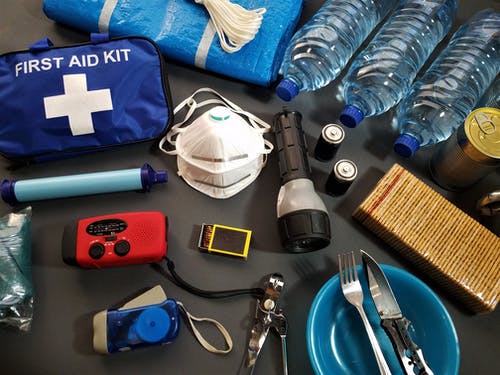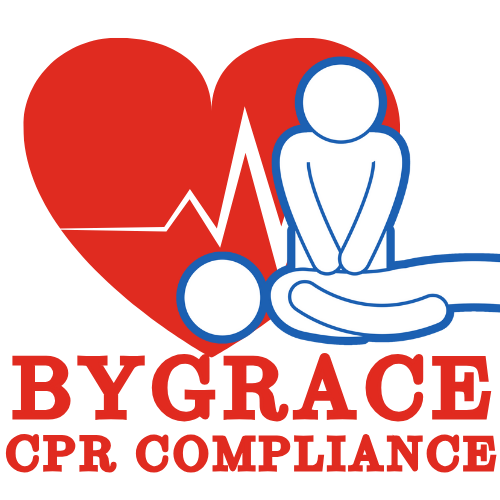
https://bygracecprcompliance.com
Nestled within the realm of microscopic parasites, Giardia lamblia emerges as a potent yet often underestimated adversary. Giardiasis, the infectious ailment caused by this cunning protozoan, has proven its resilience across the globe, leaving a trail of gastrointestinal distress in its wake. As we navigate the intricacies of this parasitic interloper, it becomes apparent that understanding its life cycle, modes of transmission, and the impact on human health is essential for both awareness and effective prevention.
The Microscopic Culprit: Giardia lamblia
Giardia lamblia, a flagellated protozoan residing in the small intestine, is the mastermind behind giardiasis. Armed with two distinctive life forms—a hardy cyst ready to withstand environmental challenges and an active trophozoite form wreaking havoc in the host’s intestines—Giardia lamblia orchestrates a delicate dance within its human hosts. As we unravel the mysteries of its biology, we delve into the methods by which it infiltrates its unsuspecting victims.
Modes of Transmission: Navigating the Fecal-Oral Route
The journey of Giardia lamblia begins with its transmission, predominantly through the fecal-oral route. Contaminated water sources, whether from pristine lakes or municipal supplies, serve as the conduits for this microscopic intruder. As we explore the various pathways—be it person-to-person contact, foodborne transmission, or the potential zoonotic exchange with our animal counterparts—we illuminate the avenues through which giardiasis asserts its presence.
Global Impact: Beyond the Individual
Giardiasis extends its reach beyond the individual, influencing public health on a global scale. The repercussions are felt in developing regions where sanitation lags, but no corner of the world remains untouched. The economic toll, the burden on healthcare systems, and the pervasive nature of the infection underscore the significance of addressing giardiasis as a multifaceted concern.
In this article, we embark on giardiasis—its causes, symptoms, diagnosis, treatment, and the imperative preventive measures. By shedding light on this microscopic intruder, we equip ourselves with the knowledge to thwart its advances and, in doing so, safeguard the well-being of individuals and communities alike.
Causes of Giardiasis.
Giardiasis is caused by the protozoan parasite Giardia lamblia. The infection occurs when individuals ingest the infectious cysts of Giardia lamblia. Here are the key causes and factors contributing to giardiasis:
Giardia lamblia Infection:
- Causative Agent: The primary cause of giardiasis is the presence of Giardia lamblia, a microscopic protozoan parasite.
- Two Life Stages: Giardia lamblia has two main forms in its life cycle—the infective cyst form and the active trophozoite form.
Transmission of Cysts:
- Waterborne Transmission: Ingesting water contaminated with Giardia cysts is a common mode of transmission. This can occur through untreated water from various sources, such as lakes, rivers, or inadequately treated municipal water supplies.
- Foodborne Transmission: Consuming food contaminated with Giardia cysts, especially in settings with poor hygiene practices, can lead to infection.
- Person-to-Person Transmission: Direct person-to-person transmission can occur, particularly in settings with close contact, where cysts are spread through the fecal-oral route.
Environmental Persistence:
- Resilience of Cysts: Giardia cysts are resilient and can survive in the environment for an extended period, allowing for transmission through contaminated surfaces, soil, or objects.
Zoonotic Potential:
- Animal Reservoirs: Giardia lamblia can infect various mammals, and there is a potential for zoonotic transmission from animals to humans. This can occur in settings with close contact, such as households with infected pets or in petting zoos.
Travel to High-Risk Areas:
- Increased Risk during Travel: Individuals traveling to regions with inadequate sanitation and water treatment are at an increased risk of giardiasis.
Person-to-Person Spread:
- Close Contact Settings: In settings with close person-to-person contact, such as households, childcare facilities, or healthcare facilities, the risk of transmission increases.
Outdoor Activities:
- Camping and Recreation: Outdoor activities, camping, and recreational water use in areas with uncertain water quality pose a higher risk of exposure to Giardia lamblia.
- Poor Sanitation and Hygiene:
- Inadequate Hygiene Practices: Poor personal hygiene, especially inadequate handwashing after using the restroom, changing diapers, or handling contaminated materials, can contribute to the spread of giardiasis.
Symptoms of Giardiasis
The symptoms of giardiasis can vary, and some individuals infected with Giardia lamblia may not show any symptoms. However, when symptoms do occur, they commonly manifest as gastrointestinal distress. Here are the typical symptoms of giardiasis:
Diarrhea:
- Frequent loose or watery stools are a hallmark symptom of giardiasis.
Abdominal Cramps:
- Individuals with giardiasis often experience abdominal discomfort and cramping.
- Bloating:
- A feeling of fullness or bloating in the abdominal area may occur.
Nausea:
- Nausea is a common symptom, which may or may not be accompanied by vomiting.
Fatigue:
- Some individuals may experience fatigue or weakness, especially if the infection persists.
Gas:
- Increased gas production and flatulence can be associated with giardiasis.
- Belching:
- Unusual belching may occur as part of gastrointestinal symptoms.
Weight Loss:
- Persistent giardiasis, especially if left untreated, can lead to weight loss.
Foul-Smelling Stools:
- Stools may have a particularly unpleasant odor.
Greasy or Oily Stools:
- In some cases, stools may appear greasy or oily due to malabsorption of fats.
Mode of Transmitting Giardiasis
The transmission of giardiasis, caused by the protozoan parasite Giardia lamblia, primarily occurs through the ingestion of infectious cysts. Here are the key points regarding the transmission:
Contaminated Water:
- Primary Route: The most common mode of transmission is through water contaminated with Giardia cysts. This can include untreated water from rivers, lakes, wells, or inadequately treated municipal water supplies.
- Recreational Water: Swimming in or consuming water from contaminated recreational water sources, such as lakes or swimming pools, can also lead to transmission.
Food Contamination:
- Raw or Undercooked Food: Consuming raw or undercooked food, particularly in settings where hygiene practices are suboptimal, can introduce Giardia cysts.
Person-to-Person Transmission:
- Direct Contact: Giardiasis can spread through direct person-to-person contact, especially in settings where personal hygiene is compromised. This can include households, childcare facilities, or other close-contact environments.
- Fecal-Oral Route: The transmission often occurs through the fecal-oral route, where cysts are ingested after coming into contact with contaminated surfaces or hands.
Animal-to-Human Transmission:
- Zoonotic Potential: Giardia lamblia can infect various mammals, and there is a potential for transmission from animals to humans, particularly in settings with close contact, such as petting zoos or households with infected pets.
Contaminated Environments:
- Environmental Persistence: Giardia cysts can survive for an extended period in the environment, contributing to the potential for transmission. Contaminated surfaces, soil, or objects can harbor infectious cysts.
Travel-Related Transmission:
- High-Risk Areas: Traveling to regions with inadequate sanitation and water treatment increases the risk of exposure to contaminated water sources, leading to giardiasis.
Diagnosis of Giardiasis.
The diagnosis of giardiasis typically involves a combination of clinical evaluation, laboratory tests, and sometimes imaging studies. Here’s an overview of the diagnostic methods commonly used for giardiasis:
Clinical Evaluation:
- Symptoms: Healthcare providers will consider symptoms commonly associated with giardiasis, such as diarrhea, abdominal cramps, nausea, and bloating.
- Medical History: Information about recent travel, exposure to contaminated water, and potential sources of infection will be assessed.
Stool Sample Analysis:
- Microscopic Examination: The most common diagnostic method involves examining stool samples under a microscope to detect the presence of Giardia lamblia cysts or trophozoites.
- Multiple Samples: Multiple stool samples may be collected over several days because the shedding of cysts can be intermittent.
Blood Tests:
- Serological Tests: Blood tests can be conducted to detect antibodies against Giardia lamblia. However, these tests are more commonly used for research purposes and may not be as sensitive as stool sample analysis.
- Antigen Tests:
- Enzyme-Linked Immunosorbent Assay (ELISA): Antigen tests can detect specific proteins from Giardia lamblia in stool samples.
PCR (Polymerase Chain Reaction):
- Molecular Testing: PCR can be used to amplify and detect the DNA of Giardia lamblia, providing a highly sensitive and specific diagnostic method.
Imaging Studies (Rarely Used):
- Endoscopy: In certain cases, an endoscopy may be performed to directly visualize the small intestine and collect samples for analysis. However, this is less common and usually reserved for specific situations.
The treatment of giardiasis typically involves antimicrobial medications that are effective against the Giardia lamblia parasite. Here are some key points regarding the treatment of giardiasis:
Antimicrobial Medications:
- Metronidazole (Flagyl): This is one of the most commonly prescribed medications for giardiasis. It is effective against both the cyst and trophozoite forms of Giardia lamblia.
- Tinidazole: An alternative to metronidazole, tinidazole is also effective in treating giardiasis.
Treatment Duration:
- Short Course: The typical course of treatment is a short-duration regimen, often ranging from 5 to 7 days.
- Single or Divided Doses: Medication may be taken as a single daily dose or divided into multiple doses throughout the day.
Follow-up Testing:
- Stool Sample Analysis: After completing the prescribed medication course, healthcare providers may recommend follow-up stool sample analysis to confirm the clearance of the parasite.
Supportive Measures:
- Hydration: Ensuring adequate hydration is important, especially if diarrhea has led to fluid loss.
- Nutritional Support: In cases where giardiasis has led to nutritional deficiencies, healthcare providers may recommend nutritional support.
Addressing Persistent Symptoms:
- Consultation with Healthcare Provider: If symptoms persist after completing the initial course of treatment, individuals should consult their healthcare provider for further evaluation and management.
Considerations for Pregnant Women:
- Medication Selection: Pregnant women with giardiasis should consult their healthcare provider to discuss the most appropriate and safe treatment options.
Preventing Giardiasis.
preventing giardiasis involves adopting a multifaceted strategy to minimize the risk of exposure to Giardia lamblia, the causative agent of this waterborne infection.
1. Water Safety:
- Filtration and Boiling: Use water filtration systems or boil water before consumption, especially in areas where the water source may be contaminated.
- Avoiding Untreated Water: Refrain from drinking water from untreated or unreliable sources, such as streams or lakes, without proper purification.
- Disinfection Tablets: In situations where boiling isn’t feasible, water disinfection tablets can be effective in neutralizing Giardia cysts.
2. Hygiene Practices:
- Thorough Handwashing: Regular and thorough handwashing, especially after using the restroom, changing diapers, or before preparing food, is crucial.
- Personal Hygiene: Educate individuals on maintaining personal hygiene, including the importance of not defecating in or near water sources.
3. Food Safety:
- Proper Food Handling: Ensure that food is prepared and handled hygienically, avoiding potential contamination from infected hands or surfaces.
- Avoiding Raw or Undercooked Foods: Steer clear of consuming raw or undercooked foods, particularly in areas with a higher risk of contamination.
4. Environmental Awareness:
- Camping and Travel Precautions: Individuals engaging in outdoor activities, camping, or traveling to regions with uncertain water quality should take extra precautions, such as carrying water purification tools.
- Pet Hygiene: Practice good hygiene with pets, as they can also be carriers of Giardia lamblia.
5. Public Health Initiatives:
- Public Education Campaigns: Launch educational programs to raise awareness about giardiasis, emphasizing preventive measures and the importance of water safety.
- Travel Advisories: Provide clear and concise travel advisories for regions with known risks of giardiasis, guiding travelers on necessary precautions.
Bottom Line
Preventing giardiasis requires a collective effort involving individual responsibility, community awareness, and public health initiatives. By implementing these preventive measures, individuals can significantly reduce the risk of Giardia lamblia infection, contributing to overall community well-being and water safety.

0 Comments